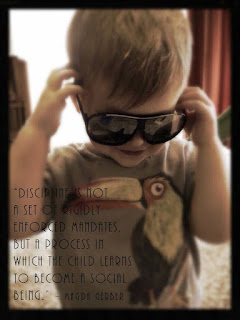Respectful Sleep Learning Part III: What I Wish I Knew Then (The Basics)
If you haven’t read Part I and Part II of this series, please take a minute to go back and check them out! Here, I have outlined some very effective (and pretty simple) tools for supporting healthy sleep in infants, which when used early on generally support the kind of sleep learning in which a child is free to express emotions but is not made to follow a “plan” or “system” that may not meet their needs. This respectful sleep learning can generally be used from birth on without affecting establishment of milk supply and absolutely without causing any psychological harm. This is the information I searched for, but couldn’t find, when my son was an infant--a consolidated summary of healthy sleep.
Wants vs. Needs: Babies NEED to sleep. Some babies WANT to fall asleep sucking on a bottle or breast. If we use that crutch when it’s easy and let it become a habit, they will soon be conditioned to NEED the bottle or breast to fall asleep. If we do not distinguish between needs and wants, responding to each one with the same urgency, the wants will become pseudo-needs. We always meet real needs (hunger, thirst, cleanliness, security, safety, sleep, etc.) promptly, but wants should be delayed, if possible, when they interfere with meeting primary needs.
“Some parents are afraid that setting limits or disagreeing with a child will be perceived as unloving. Yet sometimes setting a limit is in the best interest of the child, and is therefore an act of love. Even though the child may be protesting, you know that what you are doing is for the child’s sake. The most obvious example is the baby’s car seat. Even when she objects to being strapped into it, you continue with the task because you know that it keeps her safe” (Magda Gerber). We know that restorative sleep is a crucial need for our children, so it is our responsibility to ensure that we prioritize our response to that need above our children’s desire to play or socialize. Discerning needs also means setting effective limits.
Begin as you mean to go on: At first, I didn’t think it was a big deal to nurse my baby to sleep. After all, who can resist cuddling a sleeping infant? What I didn’t know at the time is that I wouldn’t be willing to HAVE to keep doing that for years. It isn’t a big deal until it is. For a year, I was the only one who could put my baby to bed or get him back to sleep. It was exhausting and draining to carry that burden and it had to change. If you’re not sure you can keep it up, give your baby and yourself a fair chance by helping them learn to fall asleep on their own so that you won’t have to break the habit later.
Sleep training is not synonymous with “CIO”: If you haven’t already read it, Part I of this series is the explanation for this one.
Basic Sleep Science: When babies fall asleep, they cycle through deep sleep into partial arousal about every 40-50 minutes. Partial arousal means they will move into very light sleep and/or partial wakefulness before cycling back into deep sleep (goodnightsleepsite.com). If their environment has changed since they fell asleep, they will wake fully, looking to recreate the exact environment they have come to depend on to fall asleep.
Sleep Associations: We all have sleep associations; for me it is a cool, dark room, my own familiar pillows, and a heavy blanket. These are things I can control easily in my dazed state of partial arousal. For babies, healthy sleep associations may be a predictable bedtime routine, a dark room or a nightlight, and their fingers or fist to suck on.
Other common sleep associations are: a pacifier, nursing, bouncing, rocking, shushing, singing, stroking mom’s arm, driving in a car, or having their back rubbed. What these other associations have in common is that an adult’s presence is required to control them. If your child depends on you to get to sleep, he or she will depend on you to get BACK to sleep at almost every partial arousal (4-8 times per night)!
Night Feedings: Sleep training does not necessarily mean night weaning. When you have removed feeding as a sleep association, you will find that baby will wake more fully when hungry in order to take a full feeding. Without needing nursing or a bottle to fall asleep, she will likely get more sleep overall without sacrificing milk intake. Complete night weaning (or not) is a personal decision that you should make along with your child’s doctor.
Sleep Cues: It is best to put your baby to bed when he shows signs of drowsiness because an overtired baby will have a much harder time falling asleep. Early signs of drowsiness to look for are: quiet and calm demeanor, drooping eyelids, yawning, slower sucking, decreased activity and lack of interest in surroundings. These other signs indicate you’ve missed the drowsy signs and are heading toward an overtired child: rubbing eyes, fussing, cranky and irritable, or crying.
Put your baby down drowsy, but awake: This means do whatever you normally do for her bedtime routine, including nursing or giving a bottle, but when she starts to get nice and sleepy, break her latch and set her down in her sleeping place. If she gets upset when you set her down, don’t give up! Help her relax again with nursing or snuggles or whatever she needs and try again. It takes practice to develop healthy habits, but you and she can do it! This one may not work every time from the start, but it will likely work most, if not all of the time by at least 6 weeks.
You can’t make your child sleep… but you can help them learn healthy sleeping habits, provide a calm, dark, relaxing environment conducive to sleep, and let them do the rest. Read one mom’s experience with respectful sleep learning here.
And here’s the big one…
Not all crying is bad and crying alone is not inherently damaging: Many people tend to believe this issue is black and white—that any crying at all triggers a stress response and is likely to cause long-term psychological or emotional harm. This is simply not the case. It takes a whole host of factors (typically those associated with severe neglect) to cause a child to be damaged by unattended crying. Assuming your child’s physical needs have been met, if he knows how to communicate with you and you’re honest with him about where you will be if you leave and that you will come back if he needs you, he won’t have a brain damaging stress response to being left alone, even if sometimes he is really mad about having to stop playing for sleep.
The biggest thing I wish I had really understood was how to differentiate between my son’s struggling cries and his suffering cries. I will never let my baby suffer alone if I can help it! Struggle is different though; struggle is how we learn new things and discover our strengths. Sometimes we need help, and sometimes we just need to work through something on our own. I was so afraid of the dangers of crying that I never understood how to listen for the difference.
Let go of your fear and really listen to your child, trust his competence, and wait, giving him time to show you what he can do. If it still feels wrong, go to him! Help him relax and calm back down so he can try again, or if he’s too overtired, you may just have to wait until the next sleep time and try again then. You may find that your baby is just fussing a little as he’s trying to get to sleep, or you may find what your baby really needs is to know he is loved and supported and safe to express his feelings. So give him a chance to tell you what he needs, because it may not be what you expect.
How did your fears about sleep training affect your child’s sleep story? What have you learned about sleep that you wish you knew when your child was an infant?
I highly recommend reading these other related posts:
Here’s a post by my friend Vanessa about how she interpreted the RIE Approach as it relates to infant sleep: http://respectfulparent.com/how-we-learned-abou-sleep-the-rie-way/
And one by an AP mama: http://www.alternative-mama.com/creating-a-respectful-sleep-solution/
*I originally published this post on 1 February 2014 on RespectfulParent.com
*I originally published this post on 1 February 2014 on RespectfulParent.com





Comments
Post a Comment